Kingdom Animalia Order Squamata Family Polychrotidae Scientific name Anolis allisoni Rank Species | Phylum Chordata Suborder Iguania Genus Anolis Higher classification Anoles | |
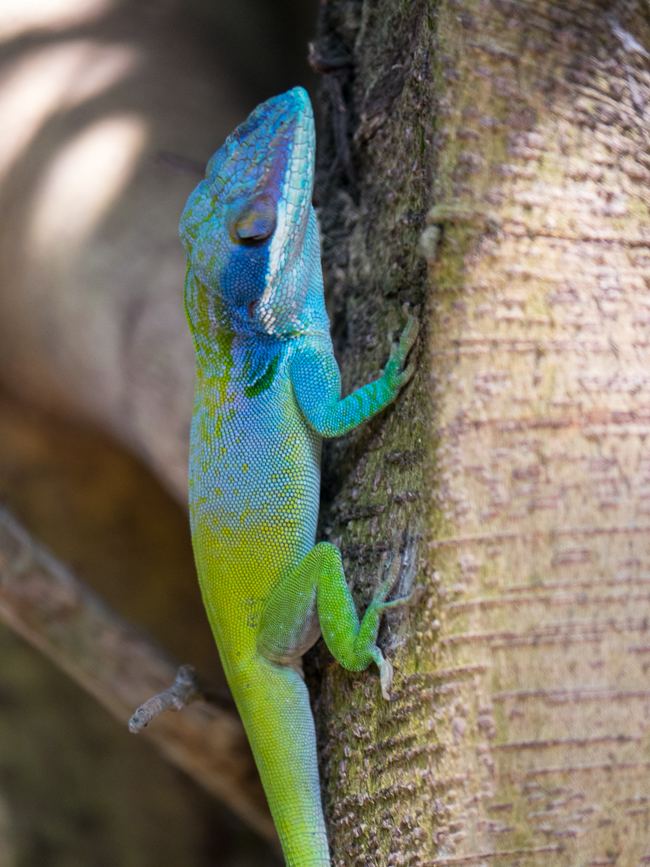 | ||
Similar Anoles, Reptile, Cuban green anole, Blue anole, Knight Anole | ||
Allison's anole (Anolis allisoni), also known as the blue-headed anole, is a species of anole. This lizard is found in Cuba (except the west and the far southeast), the Bay Islands and Cayos Cochinos off the mainland of Honduras, and Half Moon Caye off the mainland of Belize. There is also a single doubtful record from Cozumel, Mexico. This diurnal species is commonly seen on palm trunks and it feeds on invertebrates.
Contents
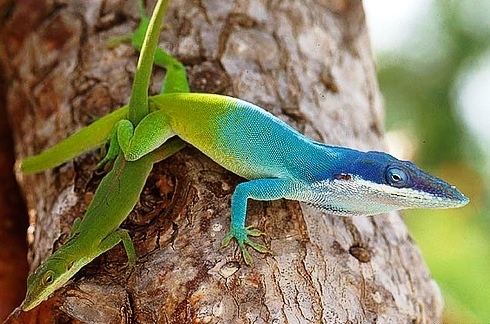
Etymology
The specific name, allisoni, is in honor of American philanthropist Mr. Allison Vincent Armour.
Taxonomy
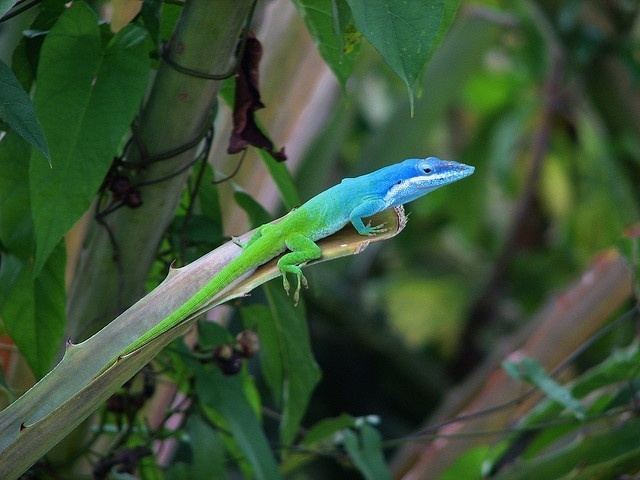
Anolis allisoni is part of the carolinensis group of anoles, a clade of mid-sized trunk-crown anoles thought to have originated in Cuba. It is very closely related to other anoles of this group such as the American green anole, Anolis carolinensis, and its Cuban "cousin" Anolis porcatus.
Description
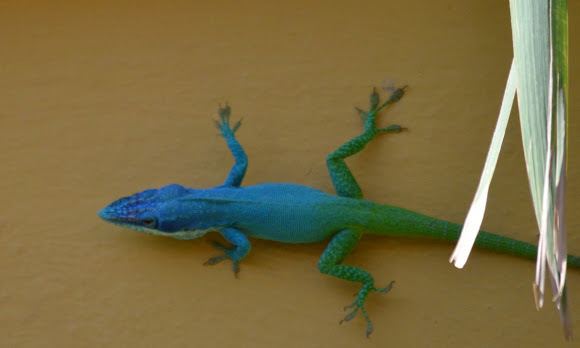
In terms of colour and morphology, Allison's anole is superficially similar to the better-known American green anole. While females are overall green with paler underparts, similar to the green anole, males have a reddish dewlap, and typically have bright blue heads, forelegs, and frontal half of the body (in specimens from Honduras, only the head is blue and the neck, limbs and lower body are bright green). In all specimens the throat is usually white. Both sexes are able to rapidly change their colour to brown. Females reach about 7.5 centimetres (3.0 in) in snout-vent length and males about 10 centimetres (3.9 in). It is one of the larger species in the carolinensis subgroup. Allison's anole is a typical trunk-crown anole. Like other anoles in the carolinensis subgroup, it has a large, conspicuously triangular-shaped head, and males have a prominent nuchal crest. This lizard has large subdigital toepads, which help facilitate climbing and clinging to vertical surfaces.
Distribution
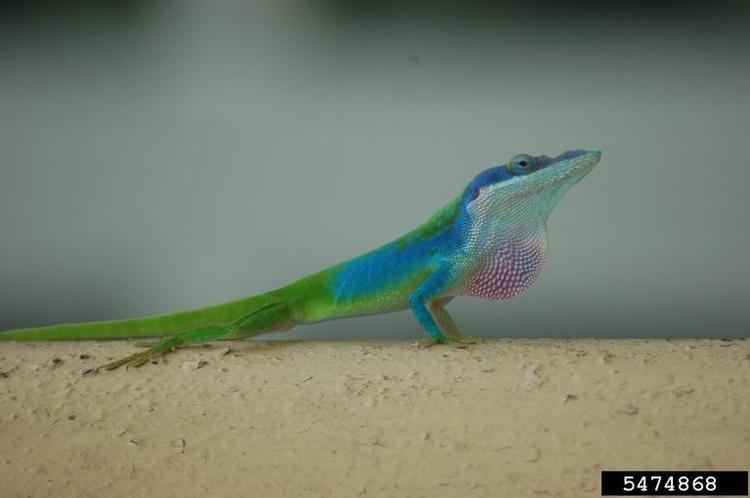
This anole is believed to have originated on Cuba but has since spread to Honduras and Half Moon Caye. This migration is believed to have occurred long ago as the different populations on these three locations display sufficient phenotypical and genetic differentiation to be considered for subspecies status.
Habitat
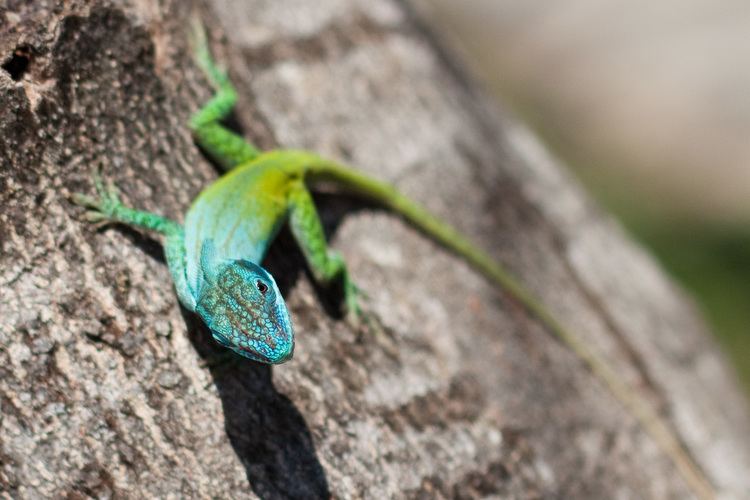
Anolis allisoni is a trunk-crown anole, meaning that it is commonly found in the canopy and on the upper trunk of tall trees. It is commonly found up to 1.5 m (4.9 ft) off the ground. This anole has evolved large subdigital toepads, compared to most other anoles, and this adaptations helps it to cling to vertical surfaces such as the trunks of trees. This lizard is most commonly seen on coconut palm trees. Before coconuts were introduced to the island of Half Moon Caye the lizard probably occupied a similar niche in the crowns of salt water palmettos (Thrinax radiata), which was exterminated from the island in 1982. It has been suggested that this plant be reintroduced to the island to provide habitat for the lizards, especially since the coconut palm population on Half Moon Caye has been gradually declining. In more urban areas this lizard may be commonly be seen on walls and other man-made structures. It is a common sight on the island of Cuba, where its population is largest.
